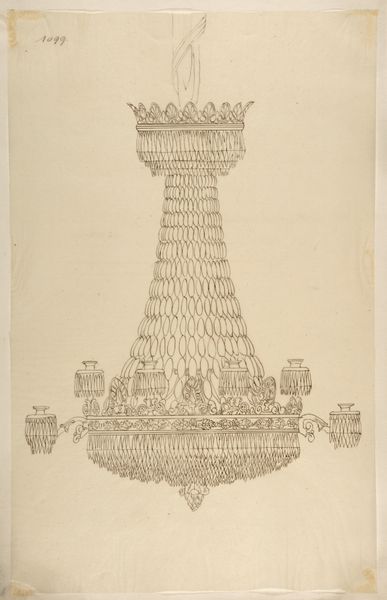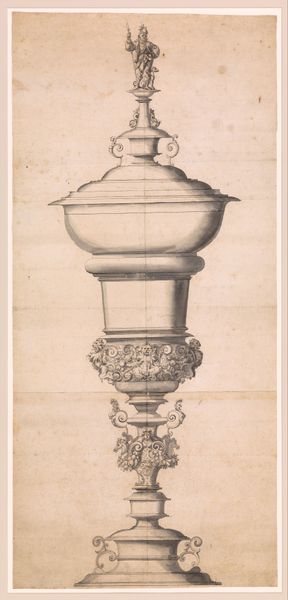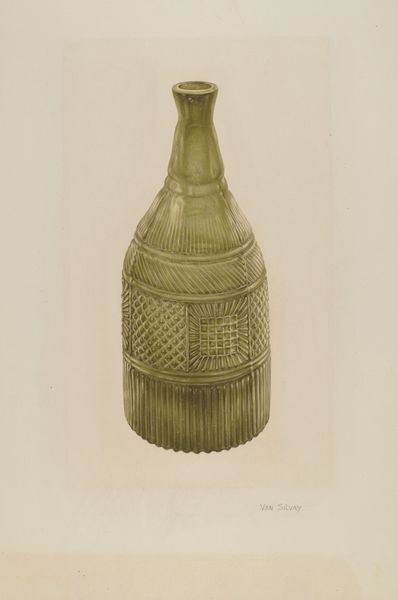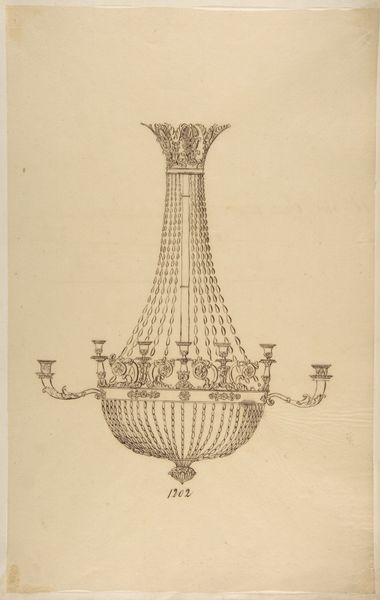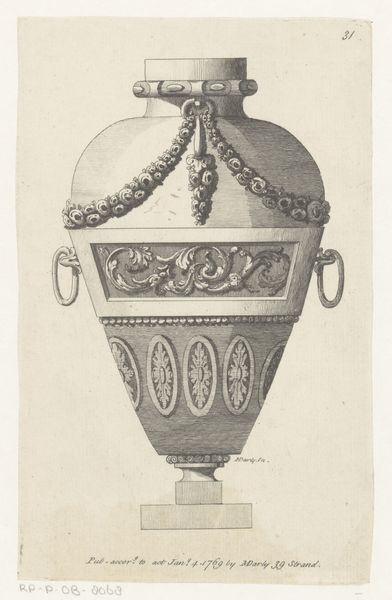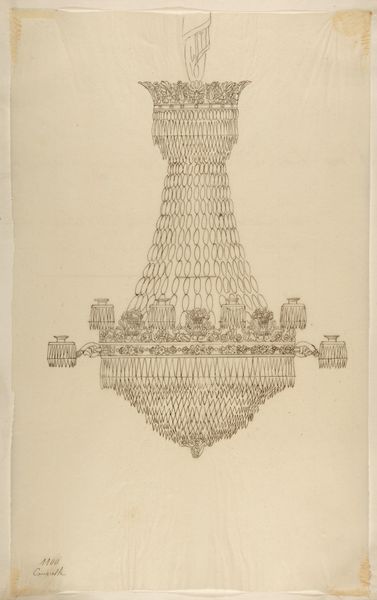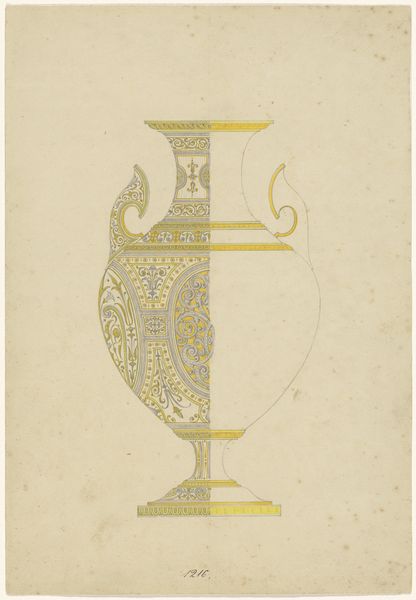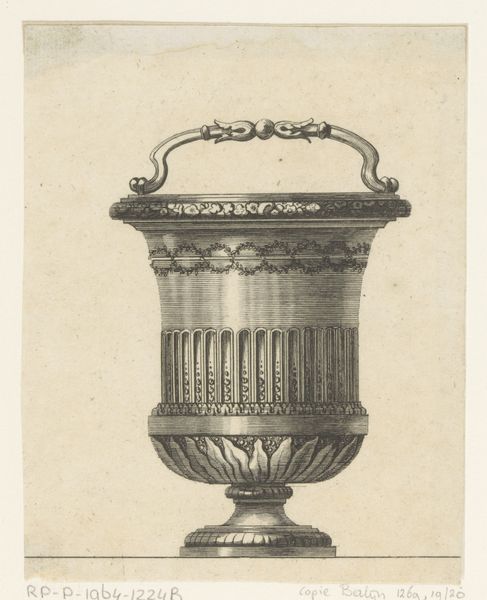
drawing, print, watercolor, pencil
#
drawing
# print
#
pencil sketch
#
vase
#
watercolor
#
geometric
#
pencil
#
watercolour illustration
#
decorative-art
Dimensions: sheet: 9 5/16 x 6 5/8 in. (23.6 x 16.8 cm)
Copyright: Public Domain
Curator: This drawing, simply titled "Design for a Vase," comes to us from an anonymous artist in the 19th century and resides here at the Met. It’s rendered with pencil and watercolor, a beautiful example of decorative art, preliminary to some object, maybe even mass producible. What's your first take on this, Ed? Editor: Spiky. Honestly, it gives me a slightly defensive vibe. Like, don't even THINK about putting your grubby mitts on me! All those diamond shapes and points… interesting aesthetic choice for something intended to hold, presumably, pretty flowers. Curator: I see what you mean, but think about the broader decorative arts context. Consider the material possibilities being explored here. The faceting would catch light, the textural contrast – imagine this translated into glass or ceramic. It isn't just about domestic adornment, but a spectacle of production. How the design gestures toward a kind of ornamental abundance available through manufacture. Editor: Okay, I get it. The spikiness is…optimistic about future fabrication! Still, a bit unsettling, maybe it is just that the delicate watercolour palette clashes with the geometry? It is an odd contrast, softness and rigid structure. Does the historical record give us any hints why such forms were preferred for, say, floral display during this period? Curator: The taste of the period leaned heavily towards eclecticism, referencing historical styles, mass-producing ornamentation, and technical refinement were valorized. Function took a backseat to form in many respects. Also, think about the status symbols of the emerging middle classes at that time – display meant proving their ability to consume. The vase as a symbolic form fit the bill, with the possibility to be realized with novel mass production processes, as the diamond pattern suggests. Editor: Makes me think about the skilled labour embedded in the design of this drawing. And even though it is not particularly aesthetically pleasing to my tastes, one feels an effort to think about making beauty democratically accessible through geometric abstraction that fits mass production processes. A little cold comfort, I guess. Curator: Precisely. It also reframes our understanding. It ceases to be merely about domestic display, the art is enmeshed with broader manufacturing. So next time we consider so-called ‘anonymous’ design work like this we remember a complex social tapestry behind the artwork, even in a draft state like we are looking at today. Editor: So, while my initial feeling was repelled by the geometry, I do get that tension, now, that push-and-pull that this piece orchestrates between nature and geometry, the singular, individual artist, and anonymous manufacture. Food for thought.
Comments
No comments
Be the first to comment and join the conversation on the ultimate creative platform.


